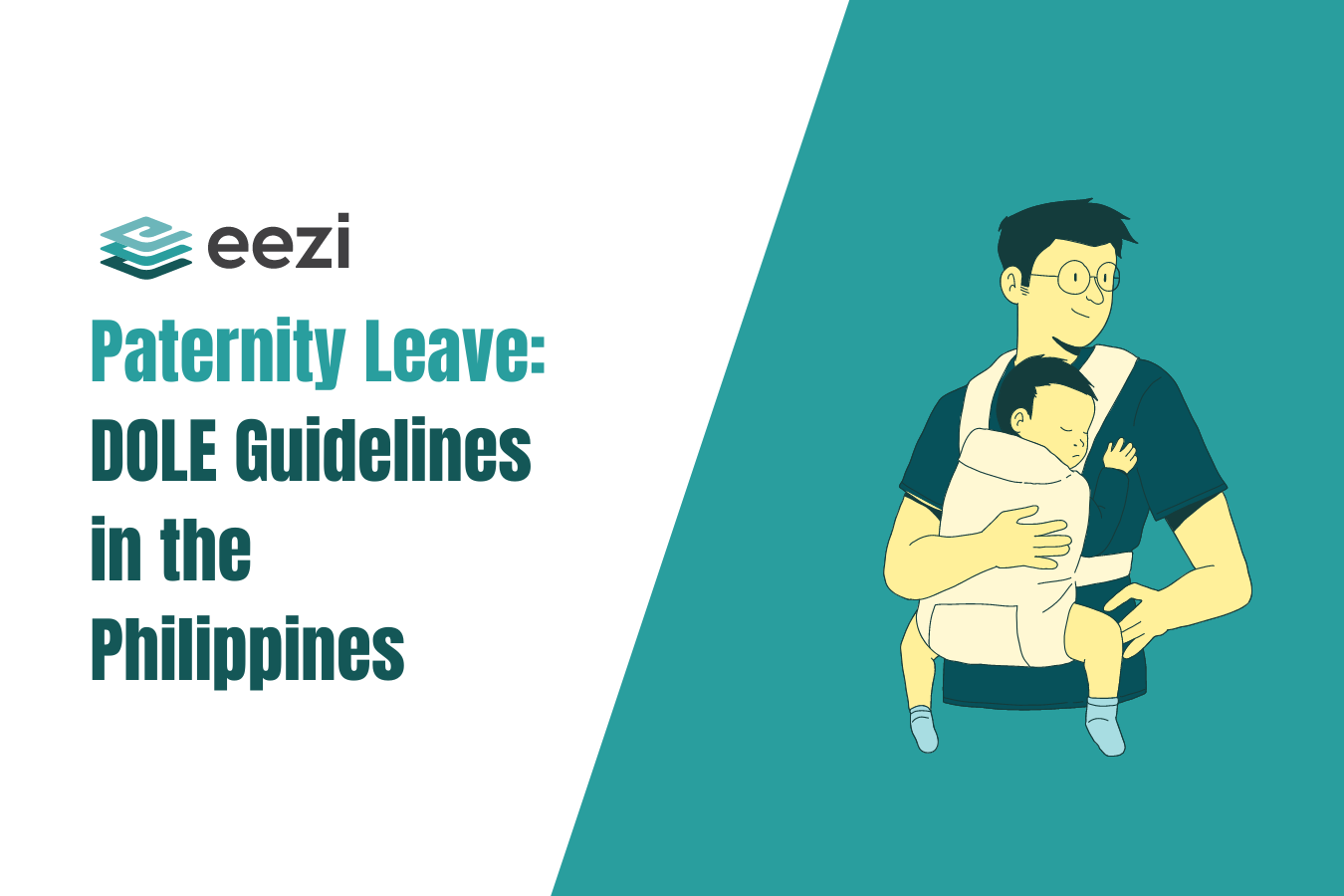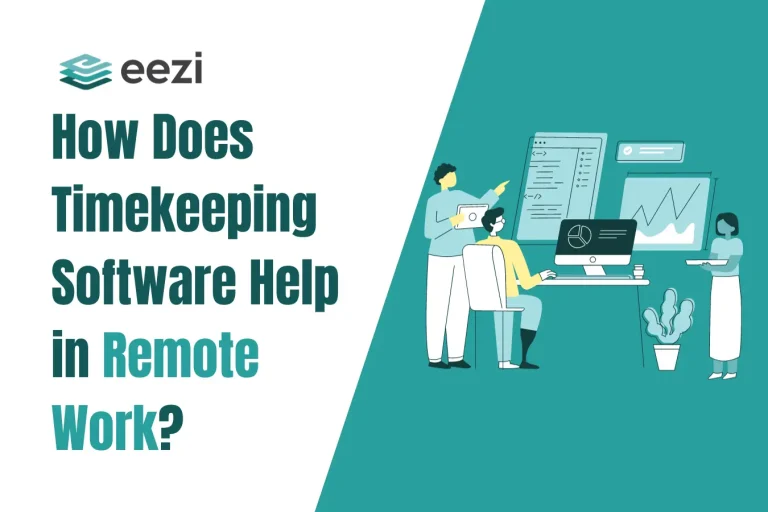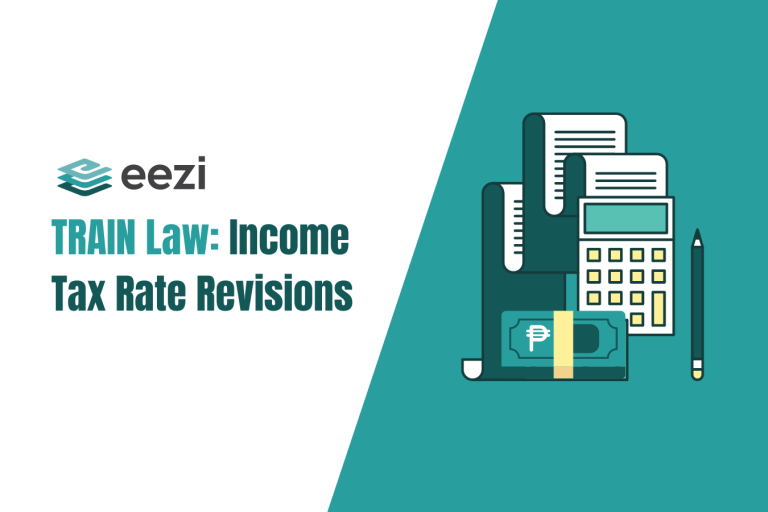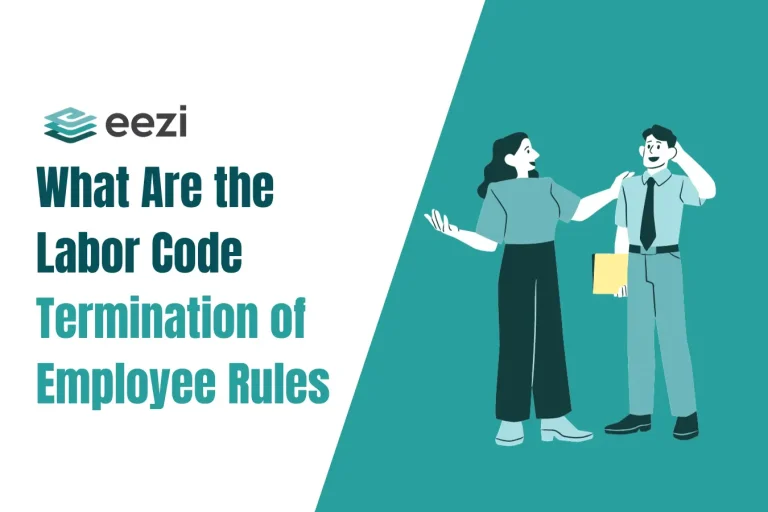What are the DOLE guidelines on paternity leave in the Philippines?
Key Points
- Paternity leave is a seven (7) days of paid leave benefit that male employees in the Philippines receive upon meeting certain conditions.
- To receive this, a male employee must be married to and living with his pregnant wife to avail of the paternity leave benefits.
- Unlike maternity leave, these benefits are shouldered by the company instead of the SSS.
- Mothers can transfer up to seven (7) days of their paid maternity leave to the father, shouldered by the SSS.

In recent years, paternity leave benefits have been an increasingly important issue. Like mothers, fathers can also take a more active role in taking care of their kids, especially early on in a child’s life.
Accordingly, the government grants them leave benefits and encourages fathers to take time off work.
But what are the differences between paternity and maternity leave benefits? This article will explore the guidelines of paternity leave benefits, its legal framework, requirements for eligibility, and the impact of this policy on payroll computation.
What is the Paternity Leave Act in the Philippines?
The Paternity Leave Act of 1996 (Republic Act 8187) grants up to seven days of leave benefits with full pay to married male employees. This is to aid their wives during recovery or in nursing their newborn children.
However, only male employees who are married to the child’s mother can avail of this benefit under the Paternity Leave Law. Furthermore, employees in the private and public sectors can avail of this benefit.
As such, an eligible employee shall receive seven (7) days of leave credits with full pay. Furthermore, the Department of Labor and Employment (DOLE) defines this leave as seven (7) calendar (not working) days.
eezi HR Guide
Stay compliant with the required employee benefits in the Philippines.
When can male employees file a leave?
An employee can use paternity leave after his wife delivers their child. In addition, it can apply to a male employee whose legal wife underwent delivery after a miscarriage. However, it is common for male employees to file the leave two (2) days before their wives’ date of delivery.
Generally, the leave date should be within a reasonable period around the wife’s pregnancy and delivery date. Lastly, the law requires fathers to file their leaves within 60 days of their child’s birth.
Can you extend the leave?
Yes, the father can have an additional seven-day paid paternity leave.
Suppose the child’s father requires more time to take care of his wife and newborn child. In that case, they could apply for a leave extension via the expanded maternity leave law. How does this work?
Under the expanded maternity leave benefits, a pregnant female worker can avail of up to one hundred and five (105) days off work with full pay.
Additionally, female workers can extend their leave for another 30 days without pay.
Lastly, solo mothers can have an additional fifteen (15) days of fully paid leave credits under the Solo Parents Welfare Act.
With this extended maternity leave period, pregnant women in the private sector can request the reallocation of up to seven days of paid leave credits to their child’s father.
Under the law, the father does not have to be married to the pregnant mother. As a result of the transfer, the pregnant woman would only have 98 days of remaining leave.
In cases where the father is not in the picture, the female employee can still transfer the leave credits to another caregiver. The only requirement is that the caregiver must be a relative or a current partner who lives in the same household.
Paternity Leave Requirements
To enjoy the seven-day paternity leave with full pay, the male employee must qualify for the following:
- You must be a current employee (regardless of your employment status) in the company upon your child’s birth
- The male employee must be legally married to the pregnant wife
- Cohabitation or living with the male employee’s legal wife
- You have a pregnant wife who has given birth or who has had a miscarriage
- The pregnancy coverage of the leave should be no more than four times.
- The leave application should be within a reasonable period.
Note that, unlike maternity leave benefits, the employer pays for this leave, not the Social Security System (SSS).
How do you avail of the paternity leave benefit?
The steps to apply for the leave would ultimately depend on your employer. Generally, you will need to file an application with your company’s HR and submit the requirements. This may include the following:
- A notice to your HR Department about the pregnancy with the expected due date.
- A Paternity Notification Form from your employer.
- A copy of your Marriage certificate
- In some cases: A proof of pregnancy consisting of a photocopy of your wife’s ultrasound and related medical records.
- For additional leave days: Maternity Notification Form and SSS Allocation of Maternity Leave Credits
Other FAQs on paternity leave benefits

How long is paternity leave in Philippines?
The Paternity Leave Act of 1996 (Republic Act 8187) grants up to seven days of leave benefits with full pay to married male employees. This is to aid their wives during recovery or in nursing their newborn children.
Can I convert unused paternity leave credits to cash?
No, the unused leave credits are not convertible to cash. Since the idea behind granting paternity and maternity leave benefits is for the parents to spend more time with their newborn, they cannot be converted to cash. Furthermore, you cannot accumulate unused leave credits for your wife’s next pregnancy.
Can an employer deny a paternity leave request?
No. If an employer denies an eligible leave, the requesting employee may report the case to DOLE. Furthermore, under the law, employers (regardless of type) can face a fine of up to Php 25,000 or up to thirty (30) days to six (6) months of imprisonment.
What if the requesting employee is not married to the pregnant mother?
If an employee is not married to the pregnant mother, they cannot avail of paternity leave from their employer. However, they can request a transfer of credits from the pregnant worker’s maternity leave credits from SSS.
How often can a father avail of paternity leave in the Philippines?
A male employee can only avail of fully paid paternity leave for up to four children. This applies to employees in both the private and public sectors. For each of the leave requests, the employee can get a maximum of seven days of paid leave.
Who pays for paternity leave benefits?
For an eligible parental leave of the father, the company pays for all the benefits that employees receive during their time off. In contrast, maternity leave benefits are paid for by the Social Security System (SSS). As such, the paid maternity leave credits that are transferable to the father’s child are also granted and approved by SSS. However, female workers who are not voluntary or regular SSS members would be covered by PhilHealth.
Does the Philippines have a paid family leave?
No, unlike the United States, the Philippine laws do not guarantee family leave for employees. Usually, local employers only provide maternity leave, paternity leave, and additional solo parent leave credits.
Does miscarriage leave Philippines apply to male employees?
Yes, it does. Whether your wife delivers your child via cesarean, normal delivery, or miscarriage, you’re entitled to paternity leave. Just ensure you have all the necessary requirements and documentation, then talk to your HR team.
Are there paternity SSS benefits?
There are no direct paternity SSS benefits. However, as previously mentioned maternity leave credits are transferable. Make sure you have all the documentation and requirements.
Related: What are the DOLE rules on leave without pay?
Ensure correct paternity leave payments with eezi
Are you paying workers on paternity leave correctly? Onboard your business on the eezi suite and let our software do all the calculations for you.



